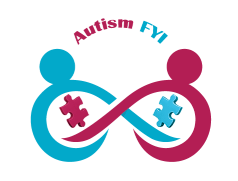ABOUT AUTISM
About Autism
Autism is a disorder that affects brain function and how it processes information. This results in various challenges having to do with touch, sound, sight, taste, emotion regulation or temperature sensation. It can present receptive challenges or with expression of thoughts and feelings via speech, touch, tantrums, or behaviors. Difficulty with interpretation of input makes it difficult to understand and react appropriately.
This increases frustration and contributes to the “meltdowns” often described by the family of those experiencing Autism. The symptoms can range from very mild and diagnosed as PDD-NOS (Pervasive Developmental Delay- Not otherwise Specified), Asperger’s Syndrome –little if any language delay but gross social delay, High Functioning Autism with some speech delays and social and possibly cognitive delays, and moderate to severe Autism where evaluation of cognitive delays is difficult to assess because of the severity in language delays. There are those on the Spectrum that will improve with age, teaching and exposure, and those that will regress. The prognosis is as variable as the disability.
“When asked “Is it rare to have two children in the same family with Autism?” the Benjamins respond. Watch how this family describes life on the Autism Spectrum and how bullying affects them.
- Slow development of words (>16 months)
- Regression of speech at any age
- Echolalia
- Poor eye contact or purposeful avoidance of eye contact (> 6months)
- No babbling, pointing at desires, smiling after 12 months
- Seizures at any age
- Less than 2 word sentences after 24 months.
- Meltdowns
- Failure to respond to the child’s name after 12 months
- Flapping of hands, spinning, facial twitches, jaw popping, rocking, banging head on objects, “Stimming “
- If you have any question about your child’s development, and for a more in-depth check list, follow the link
https://www.autismspeaks.org/what-autism/diagnosis/mchat
There has been many gains in research on the causes of Autism and yet no definitive single cause has been found. Genetic mutations, creating vulnerability in some, allergies, gastric & intestinal biologic bacteria and enzymes, combined with environmental exposures to chemicals and toxins are all being blamed for the malfunction of the delicate neurological network.
Vaccines, their additives, the schedule of vaccination, combined with the genetic vulnerabilities have been examined and eluded to by numerous groups as playing a role, only to be reported as disproved by several CDC studies. The facts, at this time are that there is still no single KNOWN cause, but that research is ongoing.
Until then the blame game is not helpful.
To hear Joyce Benjamin’s interview by the Bowie Chamber of Commerce about Autism watch the youtube video.
DIAGNOSES
As parents you must make the best decision you can at the time, with the information you are given.
You can seek counsel from your pediatrician and sources you trust that are working on finding out the truth. If you think your child is exhibiting signs of Autism and your Pediatricians response is not reassuring, then book an appointment with a Pediatric Neurologist or Developmental Pediatrician.
TREATMENTS
There are no curative treatments at this time. None of the treatments have shown to help 100% of those on the Autism Spectrum. That is why the cause is believed to be multi-factorial. Those with certain genetic anomalies that prevent breakdown of folic acid are helped with L-methylfolate. Some who do not produce enough glutathione secondary to this are helped by adding this as well, making the detoxification pathways more effective. Other genetic anomalies don’t allow the utilization or conversion of beta-carotene to cis form of Vitamin A. Vitamin therapy is helpful for these individuals. Some individuals are helped by adding digestive enzymes to each meal, helping them break down certain proteins that if not broken down and allowed to pass through a leaky gut, can cause some symptoms of Autism. Probiotics have shown to be useful for healing the leaky gut by decreasing yeast overgrowth and allowing the lining of the intestine to heal, thereby not allowing large peptides to pass through and into the blood stream. Increasing Vitamin C helps to decrease the oxidative stress experienced by many and support the immune system. Methylcobalamine is also supplemented subcutaneously by injection to aid in the methylation cycle.
Hyperbaric Oxygen has also been shown to increase oxygen to the brain tissues, and increase glutathione in the brain as well, which is difficult to increase through oral supplementation. Medications being prescribed are targeted at symptom control and mood stabilization. Behavioral Therapies like ABA are also shown to be successful in helping to teach appropriate behaviors, language, and routines that allow the individual to be less anxious and predict outcomes. This helps with frustration tolerance, decreasing tantrums, communication, and learning. Occupational Therapies are helpful in developing gross motor and fine motor controls, integration of right and left sides of the brain, and strategies to perform daily tasks that are difficult due to weaknesses of fine motor muscles. Other strategies and therapies that have been used and found helpful are Music Therapy, Horseback riding therapy, Swimming, Chelation, NAET for Allergy Elimination, Psychotherapy, and Social Skills Training.
View a List of Our Supporters – Click Here


